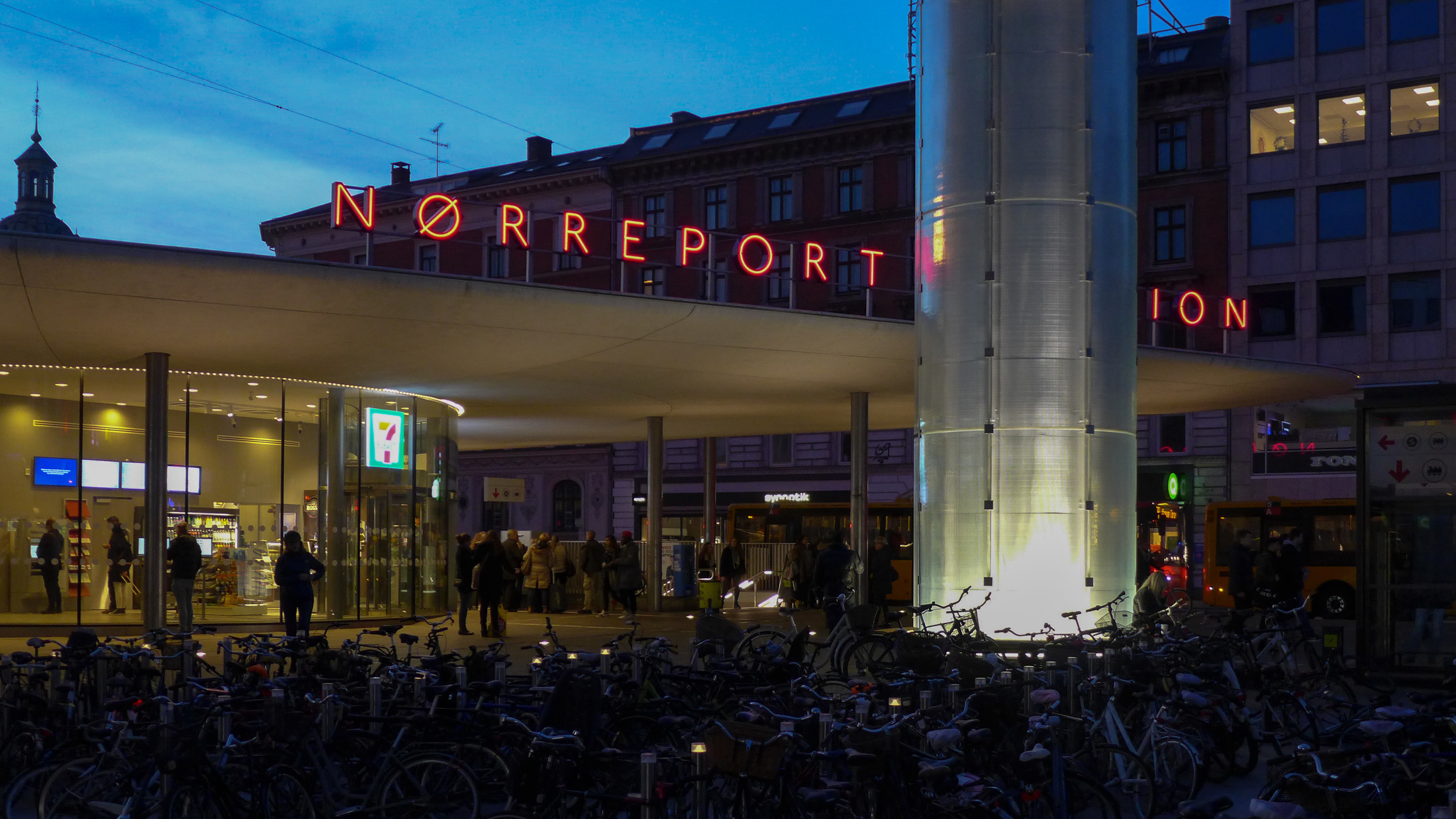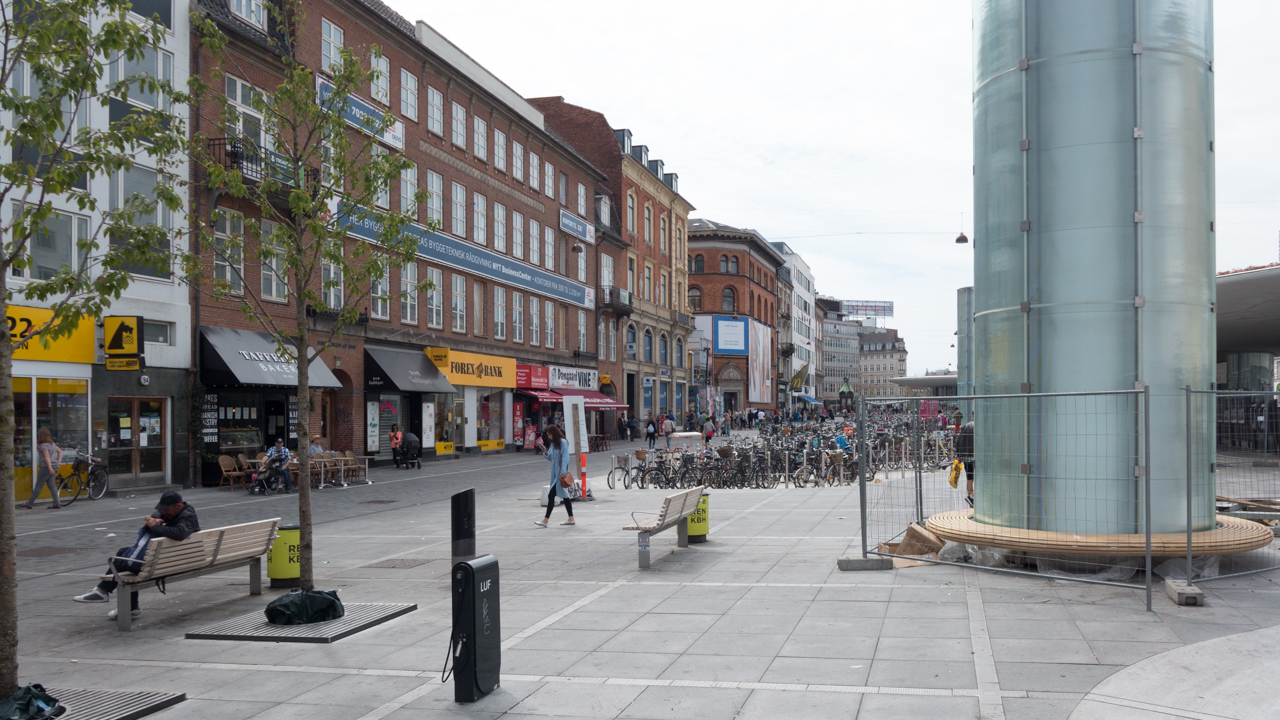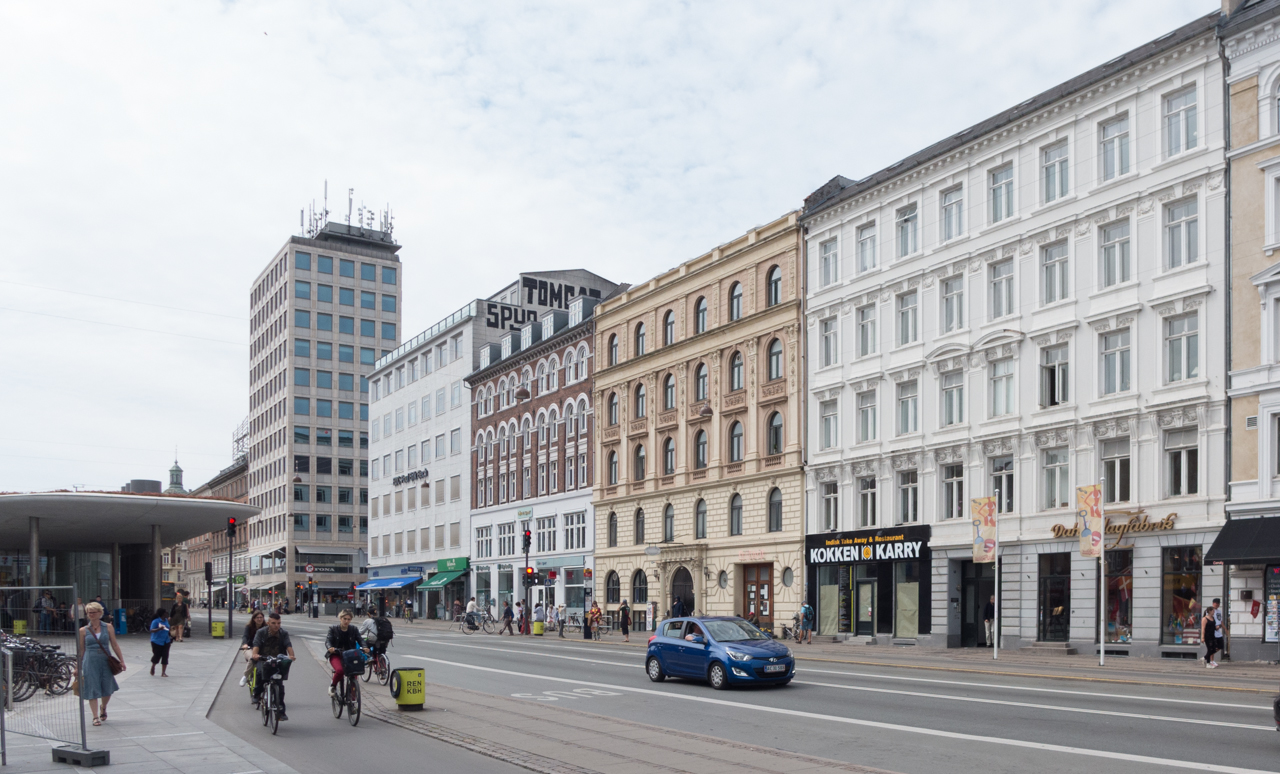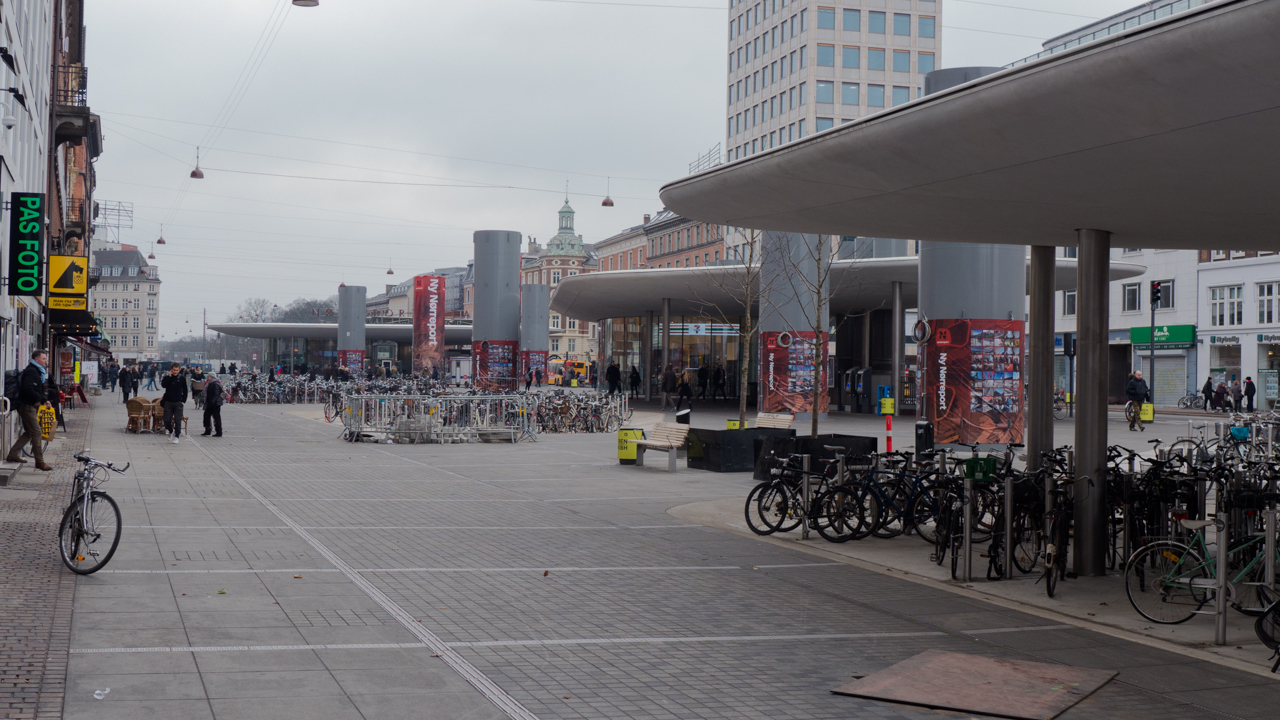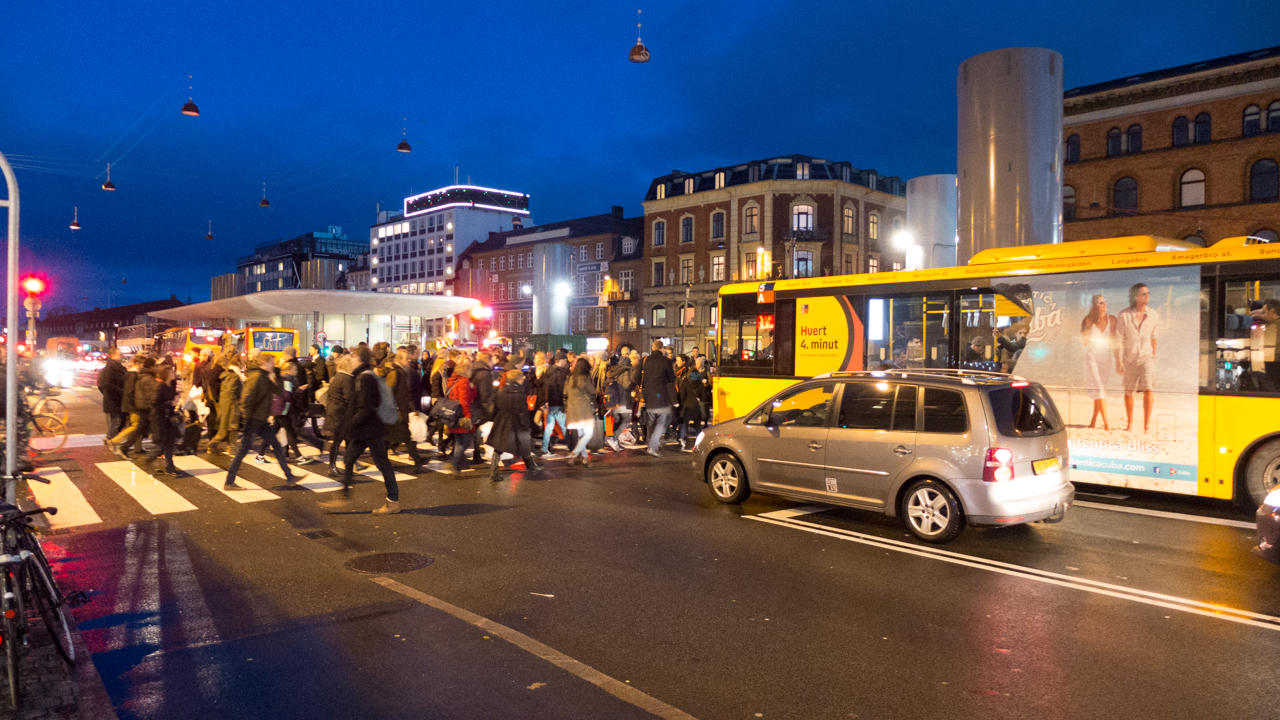Nørreport streetscape
/In an earlier post I wrote about extensive improvements that have been made to the railway and metro station at Nørreport in Copenhagen.
As the final parts of that major scheme of rebuilding are completed, there is now a clear incentive to restore or improve the buildings that line Nørre Voldgade and form the streetscape or backdrop to the new paved area that covers the three blocks from Gothersgade to Linnésgade.
When the street was set out in its present form in the 1870s, it was described as a boulevard and formed a wide elegant boundary between the old city and the new streets and squares with their large new apartment buildings that were laid out between here and the lakes.
In 1917 when a new railway line was constructed to link the central railway station with Østerport station - then a terminal stop on the railway from the north - it was called the boulevard line. The tracks were sunk well below street level by excavating a deep cutting and were then covered over and the street and pavements reinstated. From the start, the station at Nørreport was underground with round pavilions at street level to give access to the platforms.
The area declined in the post-war period and some rebuilding and redevelopment was allowed that is of relatively poor design and many of the shops and offices on either side around the station became rather scruffy.
The present buildings would certainly be improved by a careful programme of repainting and by tidying up signs, lettering and advertising.
This is not to suggest that the area becomes neat and prim …. just that bold, simple, well-chosen colours provide a better background to the busy crowds of people and the often visually confusing hubbub of life here.
Extensive rebuilding of the metro station and the square at Kongens Nytorv and the new metro station in the square in front of the city hall are also close to completion and will, with Nørreport, provide three very different transport hubs and entry points into the centre of the city that correspond appropriately with the three historic gateways into the old city.
These three areas are very different in character:
The large square in front of the city hall, on the site of the old west gate, is a major public space and the route into the city from the main central railway station cuts across the centre. Crowds of people working in the centre and visitors pass through the square and the nightlife of nearby Tivoli means that the neon signs and the commercial appearance of the square are lively and absolutely appropriate.
When the planting of the square is re-installed at Kongens Nytorv, just outside the old east gate, it will restore this grand square lined with important historic buildings - an important open green space - and reinstate it as a crucial a hub between the packed shopping area of the Walking Street, the tourist bustle of Nyhavn and the dignified grandeur of the new town around the royal palace.
Nørreport, although it will still be a major entrance into the city centre from the station, with new steps up from the platforms for an exit directly onto the main shopping street Købmagergade, it will also become the gateway to the major galleries and museums in this part of the city and to the botanic gardens and the attractions of Israels Plads and the food halls.
This will re-establish what appears to have been the original intention from the 1870s that the boulevard would be Copenhagen’s version of the Opera Ring in Vienna. With careful restoration of the facades along Nørre Voldgade, the area will form the central part of an inner ring of galleries and public spaces running around the city from the 17th-century citadel through Østerport, to the National Gallery, to a new museum of earth science, the entrance to the King's Garden and Rosenborg, the main entrance to the botanic gardens and on to the south to the inner park of Ørstedsparken and then further to the city hall, past Tivoli, the Glyptotek, a new site for the Museum of Copenhagen and on back to the harbour and the National Library and a new building for the Danish Architecture Centre.


